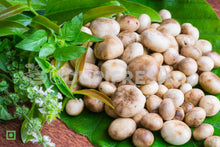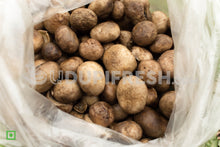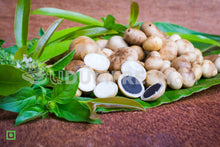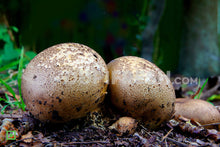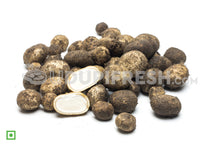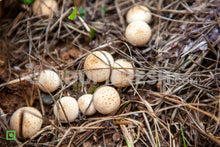
Gud Gud Alambe (Wild Mushrooms) Overview:
Gud Gud Alambe, commonly referred to as "wild mushrooms," is a seasonal delicacy found in the Western Ghats, especially during the monsoon season. These mushrooms have a unique, earthy flavor and are prized for their distinctive aroma and taste. In addition to being a delicious addition to many dishes, wild mushrooms are rich in essential nutrients.
Health Benefits of Gud Gud Alambe (Wild Mushrooms):
- Rich in Antioxidants: Wild mushrooms contain selenium and other antioxidants that help protect cells from damage.
- Boosts Immunity: They are known for immune-boosting properties, thanks to polysaccharides like beta-glucans.
- Anti-inflammatory: Contains anti-inflammatory compounds that may reduce inflammation in the body.
- Supports Heart Health: Low in calories, high in fiber, and contains beneficial minerals like potassium.
- Good Source of Vitamin D: Certain wild mushrooms provide natural vitamin D, which is essential for bone health and immune function.
Nutritional Value of Gud Gud Alambe (per 100 grams):
- Calories: 22 kcal
- Carbohydrates: 3.3 g
- Protein: 3.1 g
- Fiber: 1.4 g
- Vitamin D: Varies (some wild mushrooms are rich sources)
- Potassium: 420 mg
- Calcium: 6 mg
- Iron: 1 mg
Ways to Eat Gud Gud Alambe:
- Sauteed: Simple preparation with oil, garlic, and herbs.
- Curries: Adds a rich, earthy flavor to various curries.
- Soups: Can be used in soups for a deep umami flavor.
- Grilled or Roasted: Grilling brings out a smoky, earthy taste.
Recipe for Gud Gud Alambe Curry (Step-by-Step)
Ingredients:
- 200g Gud Gud Alambe (wild mushrooms), cleaned
- 1 tbsp oil
- 1 medium onion, chopped
- 1 tomato, chopped
- 1 tsp ginger-garlic paste
- ½ tsp turmeric powder
- 1 tsp red chili powder
- 1 tsp coriander powder
- Salt to taste
- Fresh coriander leaves for garnish
Instructions:
- Heat oil in a pan; add onions and sauté until golden brown.
- Add ginger-garlic paste and cook until the raw smell disappears.
- Add chopped tomatoes and cook until soft.
- Add turmeric, red chili powder, and coriander powder, and sauté for a few seconds.
- Add cleaned wild mushrooms, mix well, and cook on medium heat for 5-7 minutes.
- Add salt and continue cooking until mushrooms are tender and coated in the spices.
- Garnish with fresh coriander leaves and serve hot with rice or roti.
5 Indian Gud Gud Alambe Recipes
- Gud Gud Alambe Bhaji: A simple stir-fry with onions, green chilies, and spices.
- Alambe Tonak: A Goan-style mushroom curry with a coconut base.
- Mushroom Masala: Wild mushrooms in a thick, spiced tomato-onion gravy.
- Alambe Sukke: A dry preparation with grated coconut, typically served with rice.
- Mushroom and Spinach Sabzi: Mushrooms with spinach and spices, a nutritious side dish.
5 Non-Indian Gud Gud Alambe (Wild Mushroom) Recipes
- Wild Mushroom Risotto: A creamy Italian risotto cooked with wild mushrooms, garlic, and Parmesan.
- Mushroom and Leek Soup: A hearty, comforting soup with a blend of mushrooms and leeks.
- Sauteed Wild Mushrooms with Garlic and Herbs: Simple sautéed mushrooms with garlic, rosemary, and thyme.
- Wild Mushroom Pizza: Topped with wild mushrooms, fresh herbs, and cheese for a gourmet pizza.
- Grilled Wild Mushrooms with Balsamic Glaze: Marinated mushrooms grilled and finished with a balsamic reduction.
Wild mushrooms are a versatile ingredient that adds depth to any dish, whether it’s a light side or a hearty main course. Their robust flavor complements a wide range of cuisines, both Indian and international.







